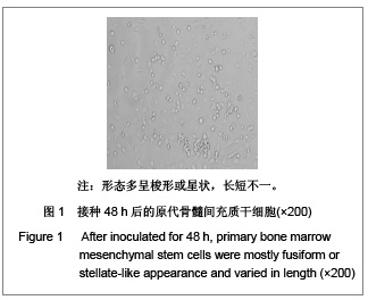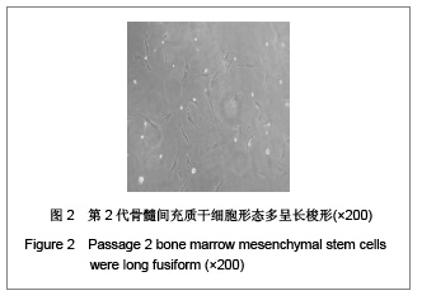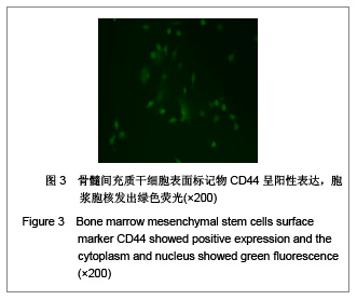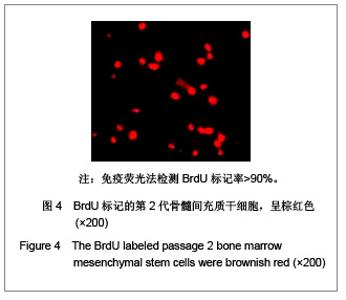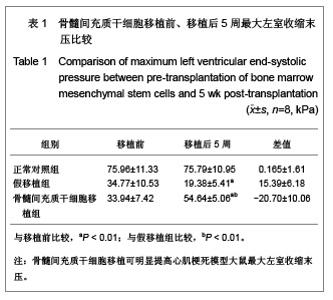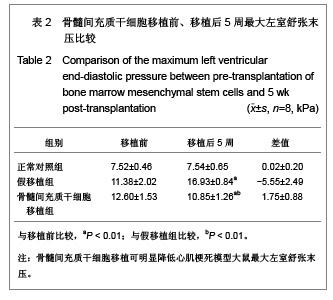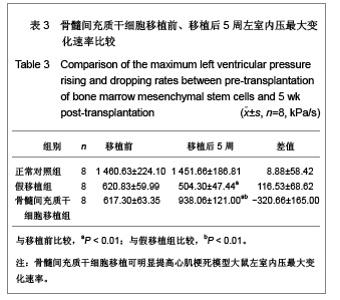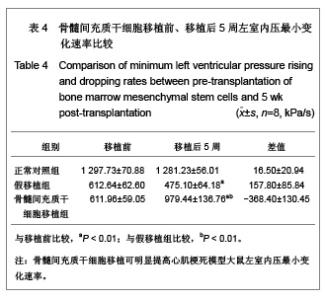| [1] Rosamond W, Flegal K, Furie K,et al. Heart disease and stroke statistics--2008 update: a report from the American Heart Association Statistics Committee and Stroke Statistics Subcommittee. Circulation. 2008;117(4):e25-146.[2] Makino S, Fukuda K, Miyoshi S,et al. Cardiomyocytes can be generated from marrow stromal cells in vitro.J Clin Invest. 1999;103(5):697-705. [3] Olivetti G, Capasso JM, Meggs LG,et al. Cellular basis of chronic ventricular remodeling after myocardial infarction in rats. Circ Res. 1991;68(3):856-869.[4] Liu KY,Tian H,Sun L. Haerbin Yike Daxue Xuebao. 2007;41(6): 531-534. 刘开宇,田海,孙露.标准化大鼠心肌梗死模型的制作[J].哈尔滨医科大学学报, 2007,41(6):531-534.[5] Peng WX,Wang L,Deng J,et al. Zhongguo Zuzhi Gongcheng Yanjiu yu Linchuang Kangfu. 2008;12(29):5759-5762. 彭吾训,王蕾,邓进,等.骨髓间充质干细胞在含转化生长因子β1诱导培养基及二维培养条件下向软骨细胞的分化[J].中国组织工程研究与临床康复, 2008,12(29):5759-5762.[6] Yan L,Li SY,Mu XL. Shiyong Yixue Zazhi. 2008;24(17):2945- 2947. 闫磊,李思源,慕晓玲.SD大鼠骨髓间充质干细胞分离培养及其生物学特性鉴定[J].实用医学杂志,2008,24(17):2945-2947.[7] Haider HKh, Jiang S, Idris NM,et al. IGF-1-overexpressing mesenchymal stem cells accelerate bone marrow stem cell mobilization via paracrine activation of SDF-1alpha/CXCR4 signaling to promote myocardial repair. Circ Res. 2008; 103 (11):1300-1308.[8] Fan ZC,Chen M,Deng JL. Shengwu Yixue Gongchengxue Zazhi. 2007;24(1):136-139. 范忠才,陈茂,邓珏琳.干细胞移植对慢性心功能不全兔心室肌细胞膜Na+-K+泵和肌浆网Ca 2+泵活性的影响[J].生物医学工程学杂志, 2007,24(1):136-139.[9] Hierlihy AM, Seale P, Lobe CG,et al. The post-natal heart contains a myocardial stem cell population. FEBS Lett. 2002; 530(1-3):239-243.[10] Wang YF,Cao XB,Cui YK. Zhongguo Bijiao Yixue Zazhi. 2008; 18(12):34-36. 王艳飞,曹雪滨,崔英凯.改良大鼠左心室插管术及心衰大鼠左心功能指标的测定[J].中国比较医学杂志,2008,18(12):34-36.[11] Liu ZQ,Tong CQ,Wang YH. Wujing Yixueyuan Xuebao. 2005; 14(1):50-51. 刘子泉,佟长青,王义和.大鼠行左心室插管术的改进方法[J].武警医学院学报,2005,14(1):50-51. |
